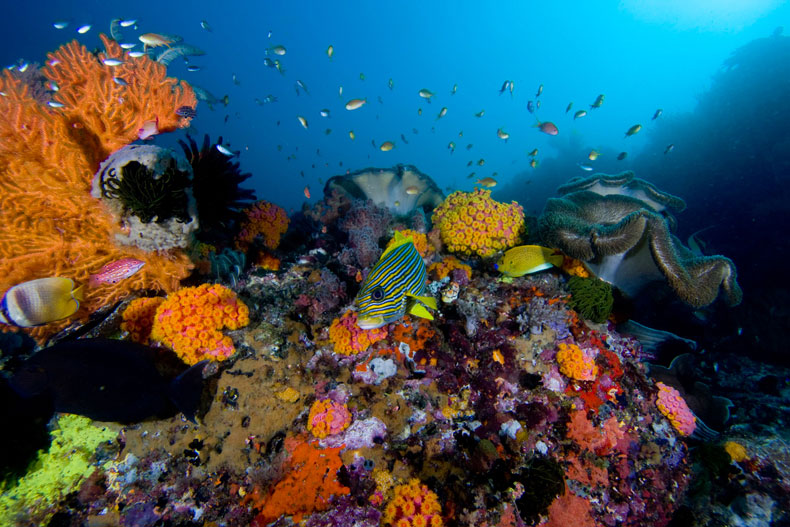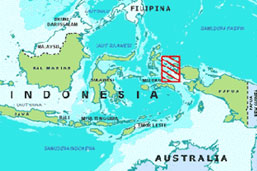A Painter’s Dream
There is a whole, amazing undersea world in Raja Ampat, and it’s one of the most beautiful worlds you could ever see. The corals are amazing colors here–pinks, oranges, blues, golds, neon shades of turquoise, lavenders, greens and reds abound.

The fish here are so intricately painted with colors that can only be invented by fish who have, over time, adapted to their painter’s palette of colorful corals. Only this can explain these hitherto unseen shades of blue, pink, orange, and yellow.
The Coral El Dorado: The Most Amazing Marine Diversity in the World
Also, this island archipelago boasts the most diverse marine wildlife in the world. Scientists recently discovered this sheer variety of turtles, fish, corals, sting rays, and species of all of these never discovered before, when scientist Max Ammer went on an adventure came to the mostly unpopulated islands to search for abandoned ships and other vehicles from World War II. He brought in ichthyologist named Gerry Allen to go on dives and research the species of fish found here and the diver had never seen anything like it—saying, “Each dive was a mini-exploration,” says Gerry. “A light snapped on in my brain, and I thought: This is it.”
(http://ngm.nationalgeographic.com/print/2007/09/indonesia/doubilet-text).
After witnessing the unusual but spectacularly colorful fishes below, he called Conservational Wildlife and got them to come out to the islands. They found some 937 species of fish here, as well as other wondrous marine life. They called this undersea galaxy the “El Dorado,” of coral reefs.
In the Very Center of the Coral Triangle
Raja Ampat’s coral reefs are located in the center of the Coral Triangle, the area where the most marine and coral diversity exists in the world.
Raja Ampat is actually an island archipelago of four islands which are situated near India’s famous “Bird’s Head Seascape.

The four islands making up the archipelago are Waigo Misool, Salawati, and Bantanta. The archipelago also contains Cenderawasih Bay, the largest marine park in Indonesia.
Because of the many assets of this coral reef system, including its ability to replenish its corals so quickly and its and resistance to global warming factors, Raja Ampat has become the center of much attention. Scientists have come to believe that the coral reefs here are more resistant to the kinds of bleaching and disease that are threatening other reef systems all over the world and if they can figure out why, perhaps this discovery will help them save other reefs.
One reason the reefs here thrive, they are certain is because of strong ocean currents which help carry larvae along the waters to deposit corals elsewhere.
Immune to Global Warming, but Not Destructive Human Practices
Although Raja Ampat has been immune to the effects of global warming that plague other reefs, it has not been immune to the dangers of humans. Currently, the island group is endangered by destructive human behaviors such as logging, over-fishing, turtle poaching, and destructive fishing.
Tourists adore Raja Ampat because of the marine park enormity and the island’s beauty, both above and below the water. Photographers, scuba divers, ichthyologists, all of whom claim the island group is the best place to study diverse marine life.
Raja Ampat is truly one of the most awe-inspiring destinations on Earth—one with beautiful clear blue waters, pastel-hued vistas, white sands, and some of the most amazing corals, fish, and other marine animals that you can see. Believe it or not, the land is just as beautiful as the coral.
